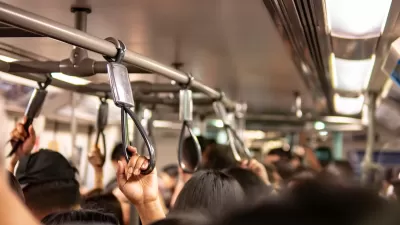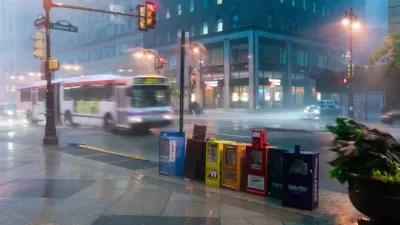The American Public Transportation Association's Director of Policy Development and Research responds to Eric Jaffe's question: "If So Many People Support Transit, Why Do So Few Ride?"
"In a recent [CityLab] blog post, Eric Jaffe asked the question, 'If So Many People Support Transit, Why Do So Few Ride?' While it is interesting for policy wonks to analyze voter intent and question their collective wisdom, a deeper analysis proves that voters seem to at least have a firm grasp on mobility issues," writes Darnell Grisby. "Jaffe’s assessment needs further discussion on three points. First, the nature of highway and public transit network coverage; second, the impact of funding decisions on ridership; and third, the nature of both economic and spatial development in the United States."
Grisby goes on to address each of these points specifically and sums up his argument with a statement of the logic behind those who support transit even if they don't use transit.
FULL STORY: Perfect Logic—Why Both Drivers and Transit Users Support Public Transportation

Study: Maui’s Plan to Convert Vacation Rentals to Long-Term Housing Could Cause Nearly $1 Billion Economic Loss
The plan would reduce visitor accommodation by 25% resulting in 1,900 jobs lost.

Alabama: Trump Terminates Settlements for Black Communities Harmed By Raw Sewage
Trump deemed the landmark civil rights agreement “illegal DEI and environmental justice policy.”

Why Should We Subsidize Public Transportation?
Many public transit agencies face financial stress due to rising costs, declining fare revenue, and declining subsidies. Transit advocates must provide a strong business case for increasing public transit funding.

Paris Bike Boom Leads to Steep Drop in Air Pollution
The French city’s air quality has improved dramatically in the past 20 years, coinciding with a growth in cycling.

Why Housing Costs More to Build in California Than in Texas
Hard costs like labor and materials combined with ‘soft’ costs such as permitting make building in the San Francisco Bay Area almost three times as costly as in Texas cities.

San Diego County Sees a Rise in Urban Coyotes
San Diego County experiences a rise in urban coyotes, as sightings become prevalent throughout its urban neighbourhoods and surrounding areas.
Urban Design for Planners 1: Software Tools
This six-course series explores essential urban design concepts using open source software and equips planners with the tools they need to participate fully in the urban design process.
Planning for Universal Design
Learn the tools for implementing Universal Design in planning regulations.
Smith Gee Studio
Alamo Area Metropolitan Planning Organization
City of Santa Clarita
Institute for Housing and Urban Development Studies (IHS)
City of Grandview
Harvard GSD Executive Education
Toledo-Lucas County Plan Commissions
Salt Lake City
NYU Wagner Graduate School of Public Service




























